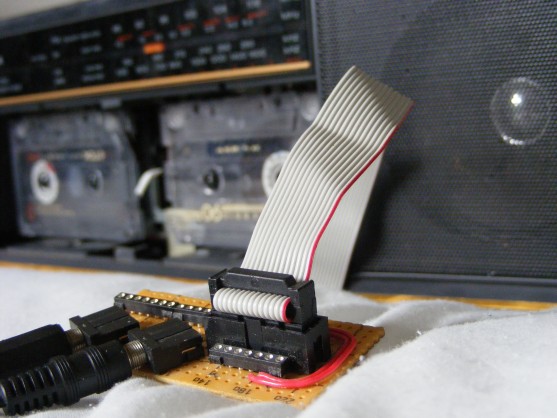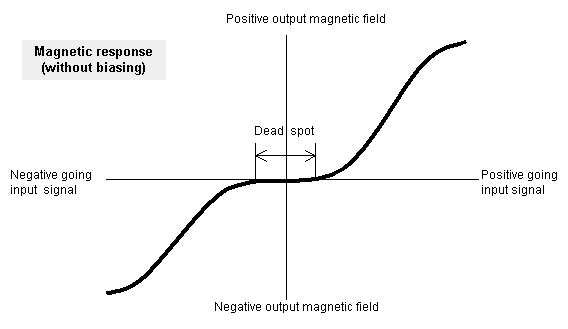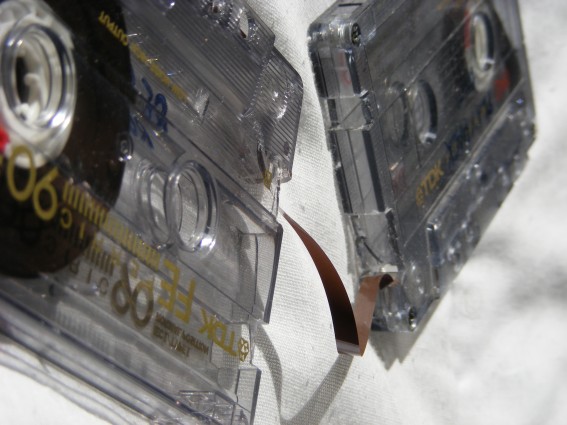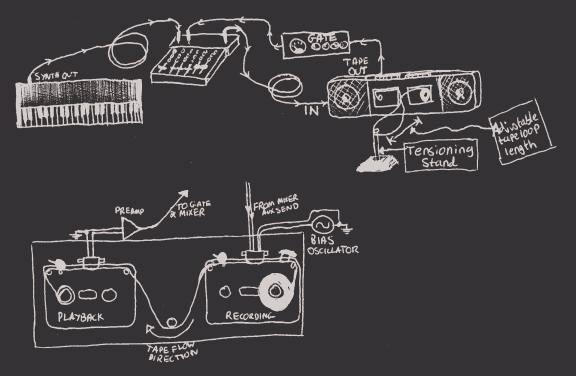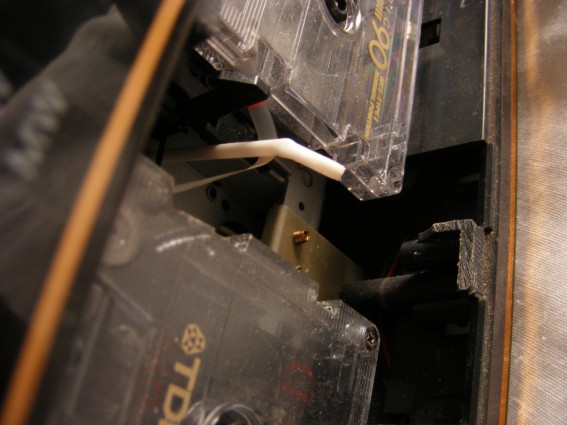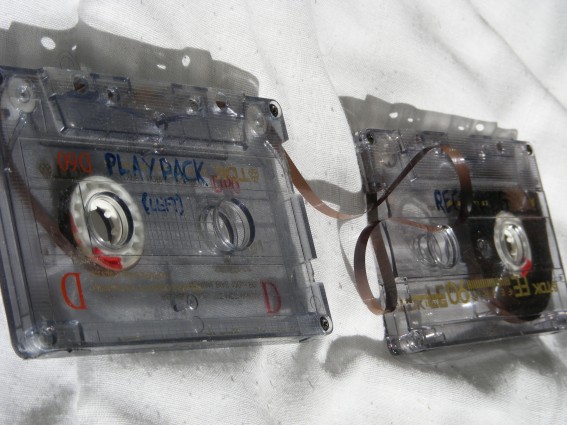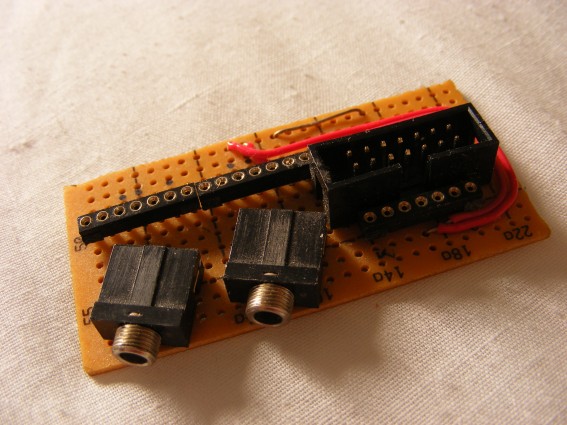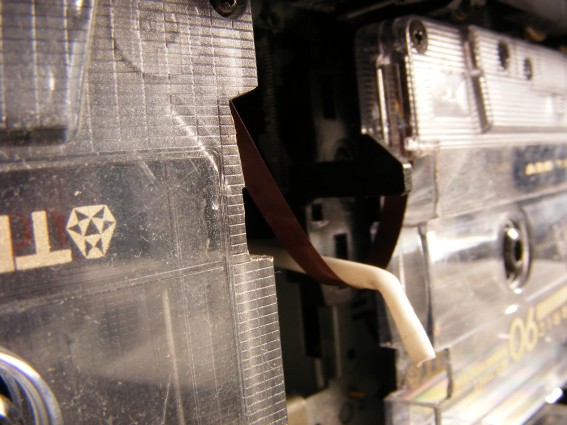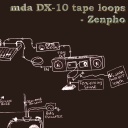|
Toshiba tape machineTurning a cheap tape machine into a delay unitMP3 music featuring this machine: DX10 tapeloops album In august 2007, I modified a tape machine to act as a delay unit as part of an idea for my DX10 tapeloops album
First of all I opened up the machine to locate the bias oscillator signal path and spliced in an alternative audio signal feed to the record head. I also added an option to mix back in from the output pre-amp, bringing all these signals out to a bit of stripboard on a ribbon cable. Mag tape has a vaguely "s" shaped input/output transfer function, a bias signal needs to be fed to it to record signals onto it without crossover distortion caused by signals passing through the flat middle bit of the "s" shape, known as the crossover point.
The bias oscillator is an important part of analogue tape recording, it provides a high frequency signal (well above the range of human hearing, often above 40khz even) which the audio signal "rides on top" of, ensuring that the magnetic tape is in the linear region of the transfer function.
I had to modify two cassette shells by drilling holes in the sides to allow the tape to pass through from one shell (in the recording deck) to the playback deck alongside it. Recorded signals can then pass through onto the playback deck to get re-recorded instead of winding up inside the recording cassette on the take up spool.
Notice that each cassette shell only has one spool inside instead of the usual two, this is because I don't need the other spools any more. I essentially made one big wide cassette - where the tape hangs loose between the two shells!
I made a lot of of music with this setup. All of it is compiled on the [DX10 tapeloops album]. The diagram below (part of the front cover artwork) shows the setup used:
Photos The tape I used was quite old and battered so when the crinkled parts passed over the heads, the audio would dip in and out due to the tiny magnetic field on the tape being interrupted. The gate helped to accentuate imperfections, any minor tape dropouts would become more noticeable each time the feedback loop went round. On some tracks, I set the motors driving the tape up so that the take-up deck was going slightly faster than the feed deck, the perception is that successive recorded loops rise in pitch as the tape stretches slightly.
|

